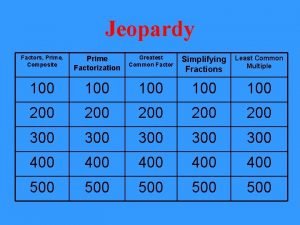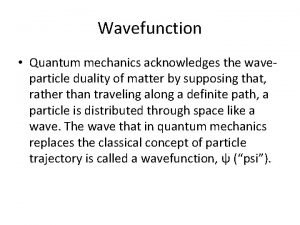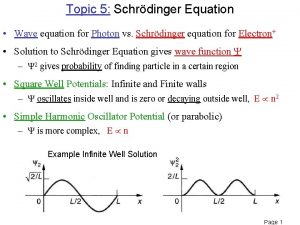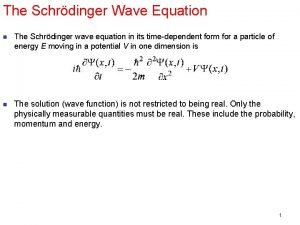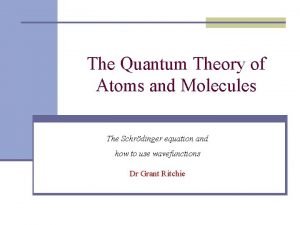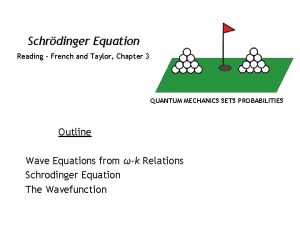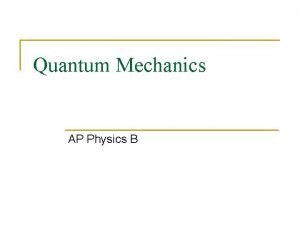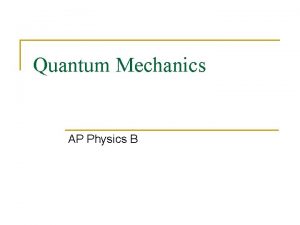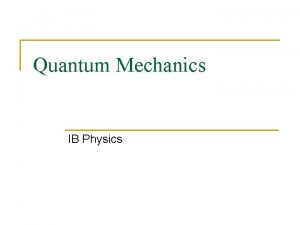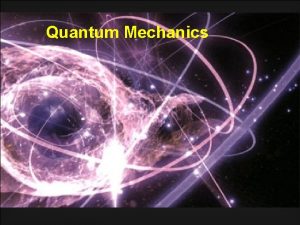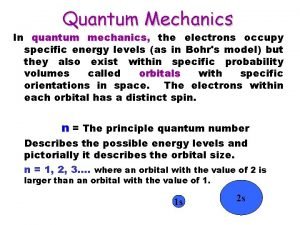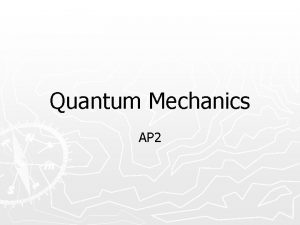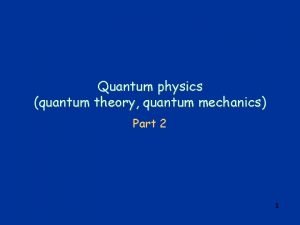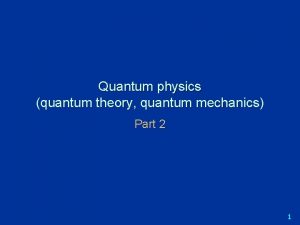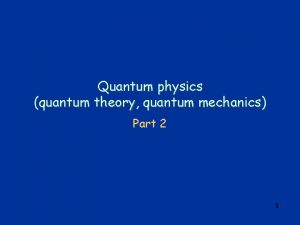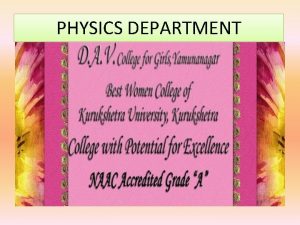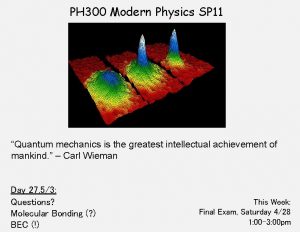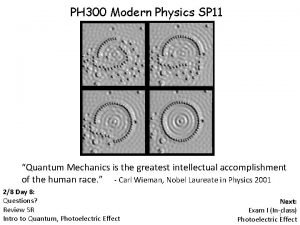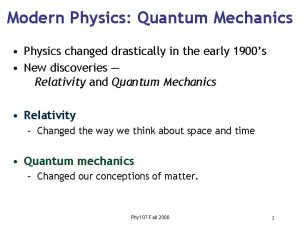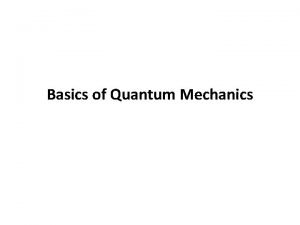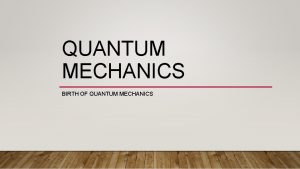Modern Physics PC 300 Class 8 Quantum Mechanics






















- Slides: 22

Modern Physics (PC 300) Class #8: Quantum Mechanics Born

Test Assessment



Photoelectric Effect + -

Photoelectric Effect: Intensity

Photoelectric Effect: Frequency 1902: Lenard - Maximum KE does not depend on intensity 1905 Lenard - Nobel Prize

1905: Photoelectric Effect: Solution Classical electromagnetic theory has problems explaining the independence of Kmax and light intensity, the linear dependence of Kmax on light frequency and the instantaneous (10 -9 s) response of the photocurrent. Einstein - Light composed of irreducible "grains" - quanta (energy packets). 1905 What a year for Einstein http: //www. aip. org/history/einstein/chron-1905. htm 1921 Einstein - Nobel Prize

Photoelectric Effect: Work Functions (Kmax)

Various Work Functions http: //www. youtube. com/watch? v=m 55 kgy. Ap. Yr. Y 1923 Millikan - Nobel Prize


Problem Set for Wednesday To answer the first two questions you will first need to do a Simulation. Run the Photoelectric Effect program by following the steps below. P: AcademicWhitePC 301 Modern Physics 2013ProgramsPhotoelectric_en Take data to answer the following question. 1. Using five different wavelengths striking Sodium, calculate the ratio h/e. (Hint, make a graph in Excel of the Stopping Potential vs. frequency. Include this graph, with a trendline, in your homework solution. And remember, that all graphs need labels, a title, and a short caption…) 2. Find the Workfunction for each of the six elements (most of which are metals…including the unknown) used in the simulation. Make a simple chart of your findings. Write a few sentences that clearly describe what procedure you followed and how you arrived at these conclusions.

Sim #4: Photoelectric Effect P-DriveWhiteModern PhysicsProgramsPetutorCTWINX Click on Photo 15. ctb then hit OK

Lab 6 – Photoelectric Effect

X Ray Production 1901 Roentgen - Nobel Prize

EM Spectrum: X-Rays (Duane-Hunt Rule)

Quantum Homework Questions Some Simulation Questions and an Electron Gun question Also… Thornton and Rex! Due Wed normal time "Yeah, well I got mine first

1897 - J. J. Thompson 1906 - Nobel Prize

X Ray Production

Measuring charge/mass (e/m) Electron beam Cathode Ray Tube Derive in lab

Lab ? - e/m setup

1909 - Robert Millikan Precise Measurement of e Oil Drop Experiment
 Classical physics
Classical physics Quantum physics vs mechanics
Quantum physics vs mechanics Beta positive decay
Beta positive decay Why does it happen
Why does it happen University physics with modern physics fifteenth edition
University physics with modern physics fifteenth edition 200 200 300
200 200 300 What are the prime factors of 500
What are the prime factors of 500 100 + 100 200
100 + 100 200 200 300 300
200 300 300 100 + 200 + 300
100 + 200 + 300 300+300+400
300+300+400 300+300+400
300+300+400 300+300+400
300+300+400 300+300+400
300+300+400 400 + 300 + 300
400 + 300 + 300 300 300 400
300 300 400 300+300+400
300+300+400 200+200+300
200+200+300 Is sinx acceptable wave function
Is sinx acceptable wave function Schrodinger wave equation
Schrodinger wave equation Incident wave equation
Incident wave equation Expectation value in quantum mechanics
Expectation value in quantum mechanics French and taylor quantum mechanics
French and taylor quantum mechanics






